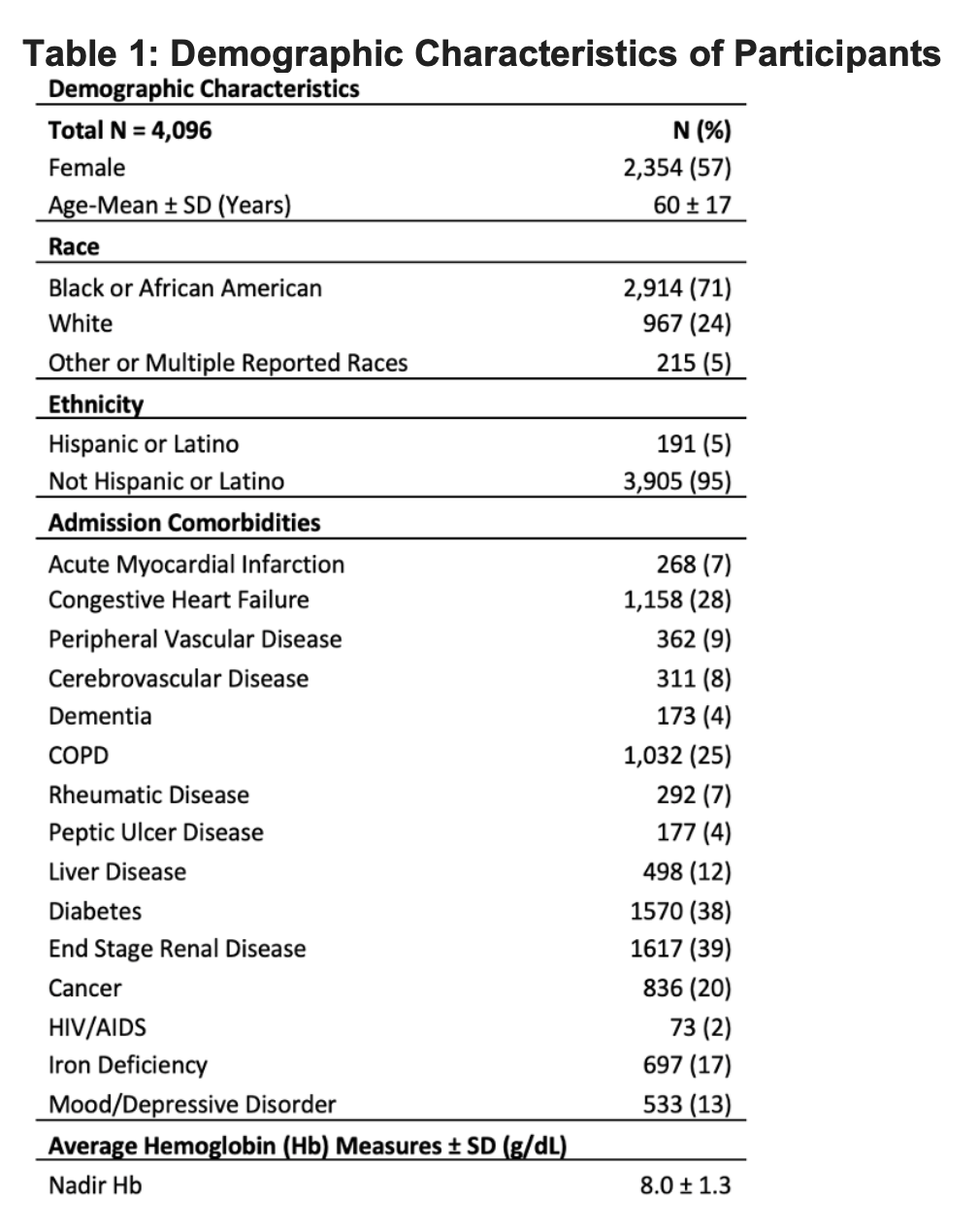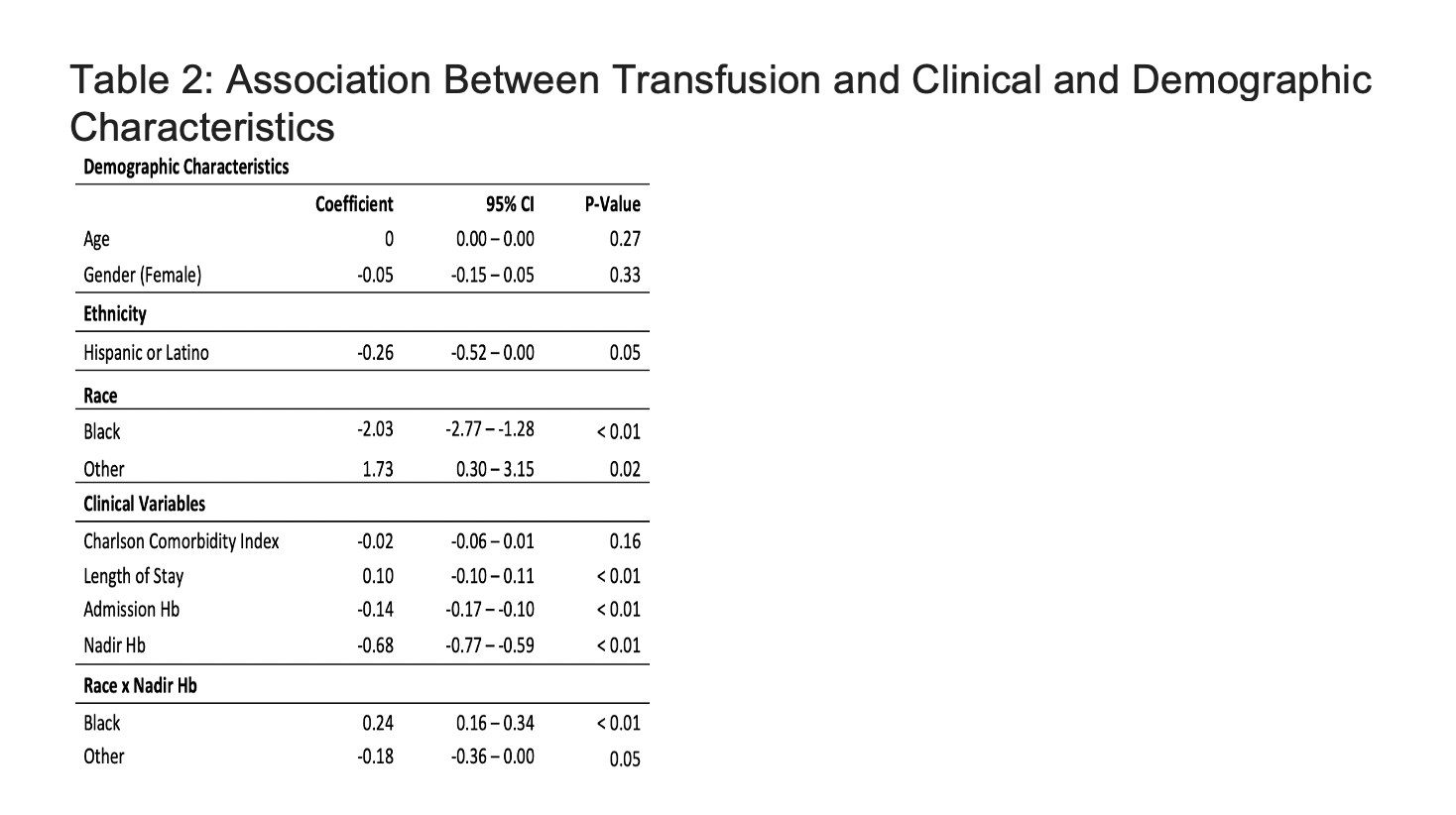Background: In hospitalized patients with anemia the AABB recommends that transfusion of red blood cells occur when a patient’s hemoglobin (Hb) drops below a restrictive transfusion threshold, either at 7 or 8g/dL. These recommendations are the result of a growing body of clinical trial evidence showing that transfusion at estrictive Hb thresholds is safe, compared to transfusion at liberal Hb levels, using mortality as the primary outcome. These guidelines have become standard of care and incorporated into practice by hospitalists, but they do not specify whether individual patient characteristics beyond Hb level, such as patient’s demographic or clinical characteristics, may influence the need to receive or not receive a transfusion within restrictive transfusion ranges (7-8g/dL). As a result, there may be variation among hospitalists in restrictive transfusion practices based on patient’s individual demographic and clinical characteristics. The purpose of this study was to test for variation in restrictive transfusion practices and determine whether any variation in transfusion practices was associated with patient’s demographic (age, gender, race) or clinical characteristics (comorbidities, length of stay (LOS)).
Methods: Hospitalized general medicine patients were approached for recruitment into the University of Chicago Hospitalist Project (UCHP), a long running clinical research study. Among patients consenting to participate in the UCHP, those with a Hb<10g/dL were eligible study participation. Patients with sickle cell anemia were not eligible transfusion practices in patients with sickle cell anemia are separate from restrictive transfusion practices. Transfusion and Hb data were collected from the hospital’s administrative data mart. Multivariable linear regression was used to test the association between receipt of a transfusion as the dependent variable, and patients demographic (age, gender, race, ethnicity) and clinical characteristics (Charlson Comorbidity Index (CCI), LOS) as the independent variables, controlling for patient’s admission and nadir Hb levels.
Results: 4,096 patients consented to participate, of which 26% received a transfusion. The average age was 60 (±17), 57% were female, 71% were African American, and 95% were non-Hispanic/Latino (Table 1). The mean nadir Hb was 7.9g/dL (±1 g/dL). The rate of transfusion was 1% for patients with a nadir Hb of 9-10 g/dL during hospitalization, 21% for patients with a nadir Hb between 7-8 g/dL, and 83% for patients with a nadir Hb < 7g/dL. In the regression model, Hispanic or Latino patients were less likely to receive transfusion compared to non-Hispanic/Latino patients (β = -0.26, P = 0.05), Black patients were less likely to receive transfusion (β = -2.03, P < 0.01) and patients reporting a race of “other” were more likely to receive a transfusion (β = 1.73, P < 0.01), compared to white patients. A longer LOS (β = 0.1, P < 0.01) was also associated with a higher likelihood of receiving a transfusion. There was no association between transfusion and age, gender, or CCI (Table 2).
Conclusions: Within restrictive Hb transfusion ranges (7-8g/dL) the rate of transfusion differs by race, ethnicity, and LOS. The differences in transfusion by race and ethnicity are surprising findings as they do not have a clear biologic or pathophysiologic explanation. Future work should focus on these differences to determine how and why transfusion practices may vary by patient race and ethnicity, and whether these reflect underlying disparities in care.


